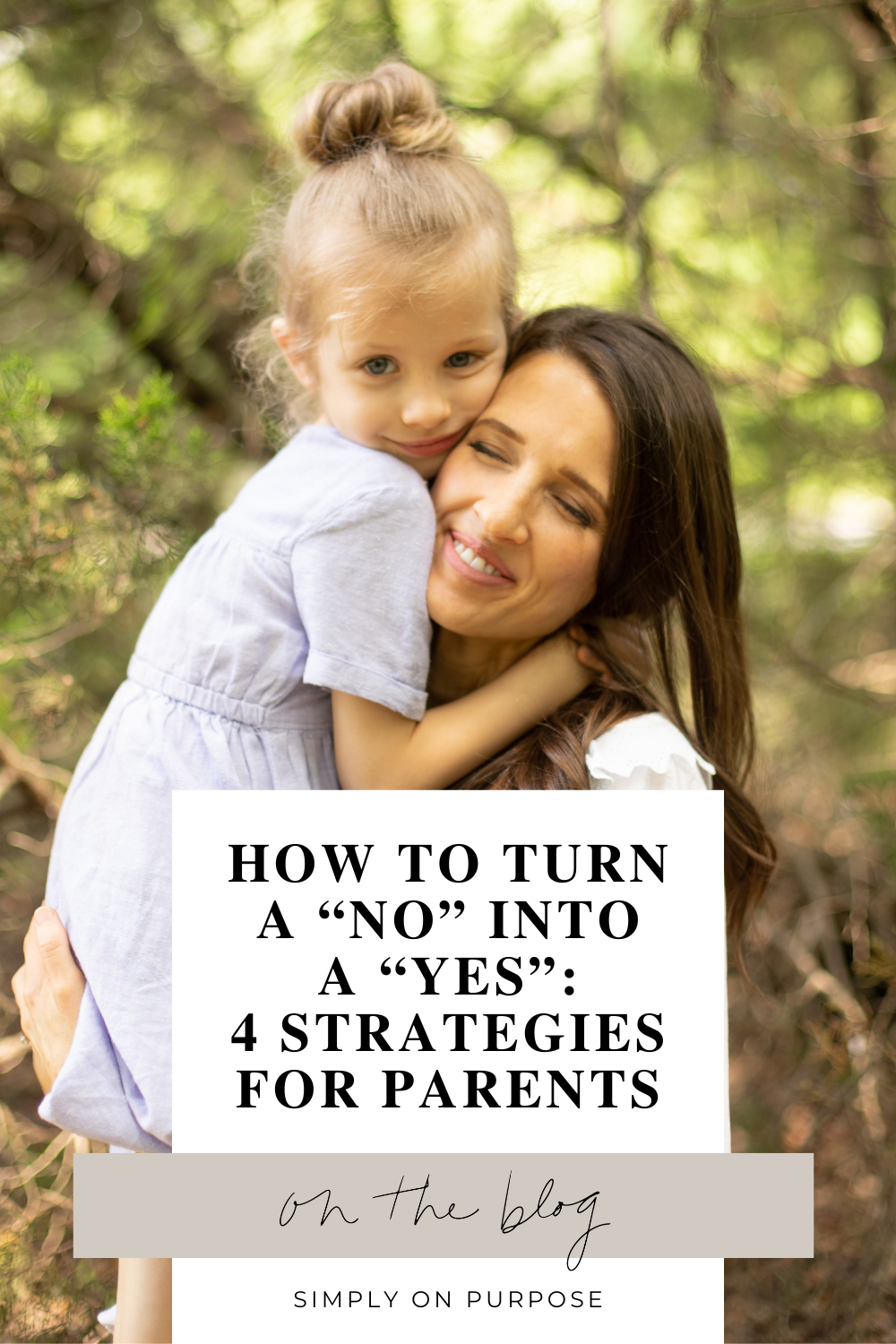I once counted how many times I said “No” to my kids in a day and it was embarrassingly high. No wonder I felt like we weren’t connected! I had to make some serious changes. While it’s necessary to set limits, there are also ways to honor your child’s desires without feeling like you’re constantly shutting them down. Here are four ways to turn a “no” into a “yes”:
1. Create a “Yes Sandwich”
Instead of giving a sharp “No!” you can smooth things over by putting it between two “Yes”s. This is called a “Yes Sandwich,” and it helps your child feel heard, even if they can’t have what they want right now.
For example, if your child wants to play with a friend, instead of saying, “No way, your room is a disaster!” try this: “Sure! That would be fun. As soon as your room is clean, she’s welcome to come over.”
By acknowledging their desire and giving them a time when it is possible, you’re offering a gentler, more understanding response.
2. Make Agreements
Being proactive with your “yes” can help avoid power struggles in the future. When a recurring issue pops up, sit down with your child to make an agreement that works for both of you.
For instance, instead of saying, “Why are you always SO loud when I get on the phone!?” you could talk about it beforehand: “I’m so glad we sat down to make an agreement. I’ll promise to make my phone calls short, and you will promise to not bother me while I’m talking.”
This way, you’re showing your child respect and helping them feel involved in the decision-making process.
3. Rephrase Your “No” to Sound More Like a Yes
Sometimes, just rephrasing your “no” can make all the difference. Instead of focusing on what your child shouldn’t do, offer them an alternative that sounds more positive.
For example, instead of saying, “No running!” try: “Walk please.”
Instead of “Stop jumping on the couch!” try: “Looks like you want to jump. Let’s race to the trampoline!”
This approach keeps the energy playful while still guiding them toward more appropriate behavior.
4. Go Mute
Sometimes kids don’t even ask—they just do things. And in these moments, you don’t always have to rush in with a “no.” Letting kids be kids is often the best “yes” you can give.
For example, if they’re running around making noise or splashing in a puddle, instead of saying, “Stop that!” try going mute. Lean into the moment and let them enjoy their childhood. Life’s little messes and moments of chaos are often the memories your child will cherish the most.
Using These Strategies to Build Your Relationship
Each of these strategies takes practice, but they offer a chance to create more positive interactions with your child. The next time you feel a “no” coming, consider asking yourself this question: How do you want your children to remember you?
With patience and consistency, these small changes can help you build a stronger, more cooperative relationship with your child—one full of more “yes”s and fewer “no”s.
If you want more help communicating effectively with your child, you might like these resources:
